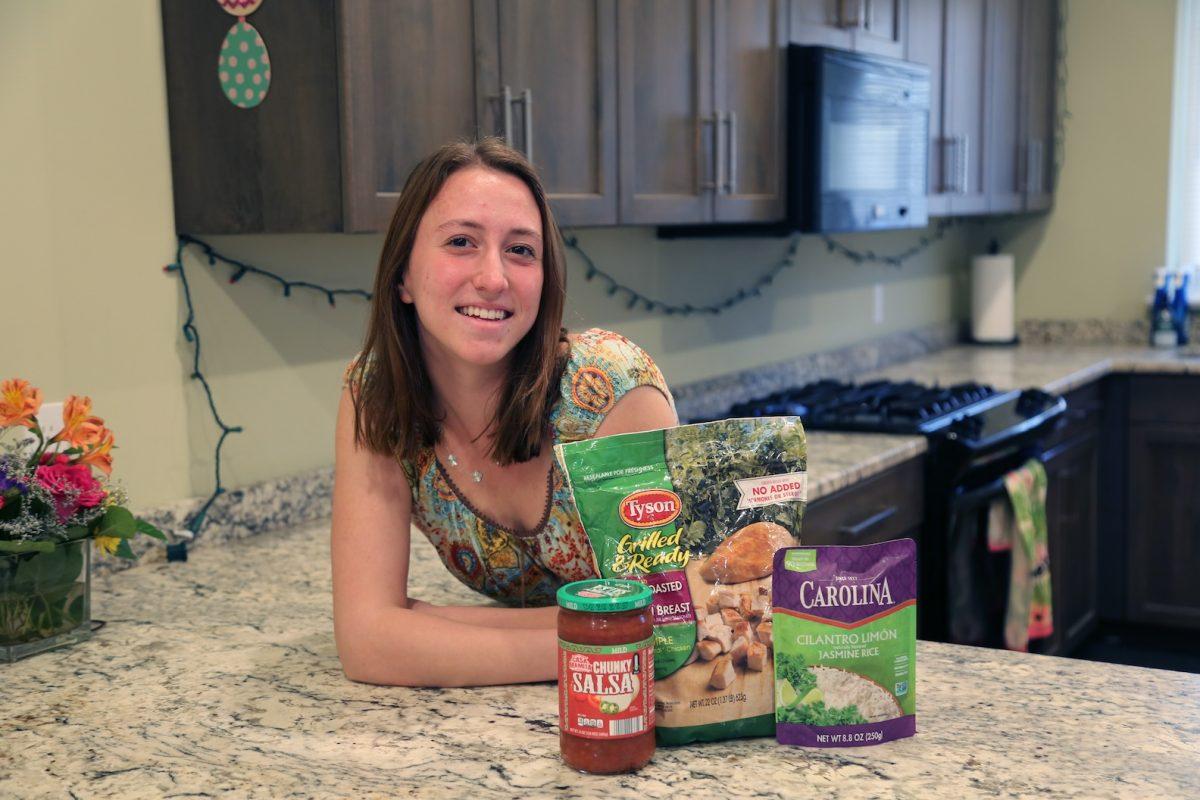Most children ask for a new bike, toys, a coloring book or, now, the latest iPhone for their 10th birthday. Not me. I asked my parents to buy me five mystery ingredients and set up a two-hour timer so I could have my very own “Chopped” experience in our kitchen.
Late last semester, I circled back to my childhood Food Network dreams, this time challenging each of my meals to only include three ingredients over the span of five days.
Before starting my culinary challenge, I reached out to Sarah Fine, an Aramark nutritionist and dietitian at St. Joe’s, to get insight on the benefits to cooking with fewer ingredients. Fine said fewer ingredients means less time spent prepping and cooking.
“With less ingredients, there may be less preparation needed and a simpler recipe,” Fine wrote in response to written questions from the Hawk. “The challenge when preparing a meal with less ingredients would be ensuring the ingredients balance each other well for both a nutritional and flavorful profile.”
Fine was right. Finding a way to amplify the flavor palette was the biggest challenge. Since seasoning and cooking oil are common household ingredients, most likely sitting in everyone’s cabinet, I decided they would not count as twoone of my three ingredients. This way, I could ensure my food was not too bland.
Before I could get my hands dirty in the kitchen, my first task was to meal prep for the week. I grabbed my pen, a sticky note and did a quick “three ingredient recipes” Google search.
Buzzfeed, food blogs and even People for the Ethical Treatment of Animals (PETA) have flooded the internet with recommendations for quick and easy meals. Social media has also made recipes a tap away with three-ingredient recipes filling “tasty” videos on “For You” pages.
While determining what ingredients I would limit myself to was difficult, I did notice right off the bat how cost-beneficial and time-efficient this challenge was. In total, I spent just under $50 for five days worth of meals. My purchases primarily consisted of canned goods, fresh produce, pantry essentials (like rice, peanut butter and pasta) and two different proteins: sausage and chicken.
Next came the fun part: the cooking.
Breakfast was easy. Yogurt, granola and honey. Avocado, white bread and a fried egg. Oatmeal with fresh fruit. I had my share of protein and an element of freshness with each flavorful bite.
Lunch and dinner, on the other hand, challenged my creativity. While some days I opted for the easy cop-out of a classic peanut butter and jelly sandwich, other days I challenged myself a little more, finding I had to make sacrifices along the way.
Canned tuna, mayonnaise and grilled Italian bread made a delicious open-faced tuna melt, albeit without my usual slice of provolone cheese. Chickpeas, tomatoes and feta cheese made for a fresh bite, but some additional red peppers or cucumber would have added a nice crunch.
Liv Fisher ’26, the social media executive for HawkHUB, a student-led organization that addresses food insecurity and basic needs at St. Joe’s, said another benefit to cooking with fewer ingredients is limiting food waste.
“If you’re mixing less ingredients, then you’ll have less bits and pieces left over that you don’t use,” Fisher said.
Saving money, time and food were all beneficial aspects, but finding a way to make sure meals were well-balanced was the next obstacle.
Fruits, vegetables, meat, fish, grains and nuts are high in nutrients. When planning out my meals, I ensured that at least one of my ingredients fell into one of these categories.
Nate Murawski ’26 agreed. And he would know. Murawski actually lived out my childhood dream as a “Master Chef Junior” season four contestant. Murawski told me there are both pros and cons to limiting ingredients, especially as a college student.
“You’re saving more money that can go towards other things, get some gas money and get whatever you need,” Murawski said. “Limiting yourself definitely makes it a little bit difficult because you really have to get creative, but I mean, that’s what we have the internet for. You can put three ingredients into ChatGPT.”
For my final meal, that is exactly what I did. I loaded up ChatGPT and plugged in “flavorful three-ingredient recipes.” After the first 10 recommendations filled my screen, I then typed “more,” which led to 10 additional suggestions. I did this about four more times before I saw the one: stuffed bell peppers.
Keeping in mind my goal of nutritional balance, stuffed bell peppers sounded like the perfect blend of flavor and nutrients.
I went to the store, picked up a box of Spanish rice for $1.89, an orange bell pepper for $1.49 and used one of my hot Italian sausage links from a previous meal in the week, which cost $3.99 for a pack of six.
I scooped the seeds out of my bell pepper, drizzled some olive oil on it and threw it in the oven as my rice and sausage cooked on the stovetop. When all was ready, I placed my rice and sausage mixture into the cooked bell pepper and enjoyed the warm, melting sensation.
Every meal did not give me that same satisfying sensation. At times, I stopped myself from adding that extra scoop of sour cream to my rice, chicken and beans, despite my craving for a creamy element.
Nonetheless, cutting down on time and money, whipping together new recipes and squashing food waste made every bite worth the challenge. I just wonder what Food Network challenge is next.















































